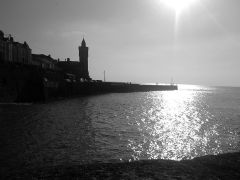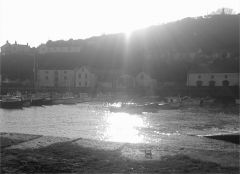-
Posts
484 -
Joined
-
Last visited
-
Days Won
1
Content Type
Profiles
Forums
Blogs
Gallery
Events
Store
Everything posted by Rayjin
-
Rogi Spitfire is a Mk XI, Blyth actually says what Mk the Spitfire they had was at 5 min 52 seconds into the film. Would like to see your model of it too (used to make these as a kid [Airfix] Loooved that glue then ) Steve
-

HELP IDENTIFY PLEASE
Rayjin replied to FOR VALOUR's topic in Great Britain: Mervyn Mitton's British & Colonial Police Forces
Hi David I think they are for a Fleet Admiral, or maybe a Field Marshall probably about 1900. Steve -
Rhodesian WWII Peace Medal Steve
-

victory justice peace
Rayjin replied to leninoforder's topic in Great Britain: Orders, Gallantry, Campaign Medals
Hi Chris It could well be a 1919 Peace Celebration medal, these were given out mainly to children at the peace celebrations held in towns and cities in July 1919 to celebrate the end of WWI. There are numerous varieties of these medals in aluminium, brass, copper, bronze, and some in silver. take a look here http://gmic.co.uk/index.php/gallery/album/249-wwi-uk-commonwealth-peace-medals/ Steve -
The redoubts were manned by the Turks, 600 with 3 12pdr naval guns in No. 1 Redoubt, 300 with 2 12pdr in No's 2,3 & 4 Redoubts, all with a R.A. NCO in charge of each. No 5 & 6 Redoubts were unfinished and so not manned. I troop Horse Artillery were placed between No's 2 & 3 Redoubt. Steve
-
-
-

Wearing an MID
Rayjin replied to Mervyn Mitton's topic in Great Britain: Orders, Gallantry, Campaign Medals
Worn on the Campaign medal, But, If no campaign medal is awarded, the oak leaf is worn on the left breast of the dress uniform after all other medals. -

A Survivor of Isandlawana - Zulu War 1879
Rayjin commented on Mervyn Mitton's blog entry in Mervyn Mitton's Blog
Excellent! William Adams was one of the five Buffalo Border Guard to escape the disaster at Isandhlwana, they reached Helpmakaar where:- 'The Defence of Helpmekaar by Graham Alexander' (The survivors of the Natal Carbineers and Newcastle Mounted Rifles had already left) What with one son escaping Isandhlwana with him, his 16 year old son at Fort Pine, and (I think!) another son in the Buffalo Border Guard, maybe with Chelmsford Column, who can blame them for getting out of a poorly defended place after what they had just witnessed a couple of hours before. -

stolen colection of WWI peace medals
Rayjin replied to paul wood's topic in Great Britain: Orders, Gallantry, Campaign Medals
Hi Paul Sorry to hear about the theft, I also collect the 1919 Peace medals, so I will keep my eye open for any unusual numbers of these appearing for sale. I will also send the info in your post to my usual sources in case they get offered any or hear of anything. Steve -

Italian Victory Medals
Rayjin replied to Kev in Deva's topic in Inter-Allied Victory Medals of the Great War
Hi Oliver FM Lorioli & Castelli-Milano is the maker, G.Villa was the person who made the dies for making the medal. Gaetano Orsolini designed the medal, you will see Orsolini MOD on Italalian VM's to the left of the makers name. Depending on the VM type you will see a difference in makers name, designers name and die sinkers name. Steve -
Hi Donald Diamond shape patch (2 inches x 2 inches) light colour over dark - only 2 come to mind 20th Battalion of the 5th Australian Infantry Brigade (White over Olive Green) or 24th Battalion Australian Infantry Brigade (White over Red). Both Battalions took part in the Gallipoli Campaign. Others I've seen have a dark colour at the top, but as this isn't my area others maybe able to help further. Regards Steve
-

95th Rifles...... 1800 to 1815
Rayjin replied to QSAMIKE's topic in Great Britain: Militaria: Badges, Uniforms & Equipment
Hi Mike Have you looked at Osprey Publishing, they have published a book - British Rifleman 1797-1815 Paperback; April 2002; 64 pages; ISBN: 9781841761770. They are usually full of colour drawings, photos and descriptions. Its 64 pages, but their drawings are usually pretty accurate. You can find this book here http://www.ospreypublishing.com/store/British-Rifleman-1797%E2%80%931815_9781841761770 Steve -

Unusual War Service Badge
Rayjin replied to Mervyn Mitton's topic in Great Britain: Militaria: Badges, Uniforms & Equipment
Hi Bluehawk Yes, the Badge and the Certificate that went with it had to be returned, either to the employer, or to the Ministry of Munitions. Badges had to be surrendered immediately if the man’s employment within any company changed to a non war-essential category, and the wearing of unathorised (i.e. not officially issued) badges became an offence under the Munitions of War Act. Supplying, selling, buying, pawning or accepting badges in pawn all became offences, and the Police were given power of arrest without warrant if they suspected that an offence may have been committed. Penalties under the Act were harsh; for non-serious cases (cases of a “minor character”) the Courts could sentence the offender up to 6 months imprisonment with or without hard labour, or up to a £100 fine, or both. Serious offences were to be sent for jury trial or Court Martial and the sentences available became penal servitude for life, or, “if the offence was committed with the intention of assisting the enemy the death penalty may be inflicted. The court may order the forfeiture of the offending badges etc.” Steve -

French Victory Medals
Rayjin replied to Kev in Deva's topic in Inter-Allied Victory Medals of the Great War
Thanks for the info Rob Steve -

French Victory Medals
Rayjin replied to Kev in Deva's topic in Inter-Allied Victory Medals of the Great War
Hi Need some opinions on this that I picked up this weekend. Think this is a replica/repro !!! Obverse Reverse 7 o'clock on edge 1 o'clock on edge The reverse shows signs of the mold having dust or something in it when the casting was made, and where the L.O.Mattei would be, there are faint traces. The medal is approx 35 mm in diameter and weighs 20.5 grams. No ribbon was with the medal. Any thoughts would be welcome. -

Unusual War Service Badge
Rayjin replied to Mervyn Mitton's topic in Great Britain: Militaria: Badges, Uniforms & Equipment
Hi sabrigade I've not seen the Coventry Ordnance Workshop badge before, but I have seen the Munition Volunteer badge, there is also a version of this one with red enamel around the cannon in the centre. Always keeping my eye out for them -

Unusual War Service Badge
Rayjin replied to Mervyn Mitton's topic in Great Britain: Militaria: Badges, Uniforms & Equipment
There was a list of the Protected Occupations in The Times, November 1915, and that the list was last updated on 1/2/1918, by then the list had grown to include hundreds of occupations. Some of the occupations were:- "Forceps Spring Maker (Surgical & Dental)", "Vice Forgers Assistant (misc metal trades)", "Bell Maker (Bugle & trumpet making)". I have read on Tom Tulloch-Marshall's site http://www.btinternet.com/~prosearch/OWS.html that the YCMA was issued 25,000 badges under the classification of 'SF' - "Manufacturer not otherwise classified; Food" I know that during WWI if a 'Badged' man received his call-up papers, he had to inform his employer immediately, whereupon they would fill out a form with the mans details and badge number, which would then be sent to the Recruitment Officer who would then strike the man from the call-up list. During WWII there were similar badges but I don't think they were as widespread as during WWI. Steve -

Unusual War Service Badge
Rayjin replied to Mervyn Mitton's topic in Great Britain: Militaria: Badges, Uniforms & Equipment
Hi Mervyn I've been slowly collecting these badges for a while now and can give you the following brief explanation of them. These were for men in reserved occupations that was vital for the war effort. "On War Service 1914” – Admiralty issue, unnumbered until beginning of 1916, from then on it was numbered. Approximately 500,000 unnumbered badges issued, of which only about 150,000 were recalled. These were brass and enamel and were issued by the Admiralty. Because other firms had begun to issue their own versions the government decided to step in and regulate the issue of these badges and who and what trades were eligible. http://gmic.co.uk/in.../5555-1914-ows/ “1915” War Office (Ministry of Munitions) issue. 1st issue – Brass with enamelled finish. 2nd issue – Brass, which became known as the Economy Brass version. Because of the need for resourses for the War Effort it was decided to redesign the OWS to be more economical, so the redesigned 2nd issue1915 OWS became just a brass badge exactly the same as the 1st issue. http://gmic.co.uk/in...15-ows-l-69973/ “1916” WO (MoM) issue. Brass (for female workers only). The 1916 OWS, was Triangular, this was issued only to the women who worked in the munitions factories. http://gmic.co.uk/in.../5610-1916-ows/ From 1915 onwards, only the 1915 2nd issue brass OWS was issued to men working on war service in the reserve occupations, there were regulations on who were eligible, and when they had to give them up, for example, if they moved from a reserved occupation (not eligible for call-up by the forces) to a non-reserved occupation where they were eligible for call. The letters stamped on the back are a reference (I think!) to the reserved occupation trade. These badges were manufactured by Mappin & Webb as well as J.R. Gaunt & sons and a few other makers. Steve -

Other Victory Medals / Related Items
Rayjin replied to RobW's topic in Inter-Allied Victory Medals of the Great War
Hi Lambert I have been collecting the various UK Peace Celebration medals of 1919 for a time now, there were over 200 towns an boroughs that issued them in Britain in a variety of metals; bronze, brass, copper, aluminium, pewter and white metal, with some being in silver. There are also other commonwealth versions like the one you show for Calcutta, Vancouver and Australia, just to name a few. I've not started on the commonwealth medals, or the table medal versions that exist as yet, but given time. As you say, it does make an interesting collection. Steve -

Please ID this unit
Rayjin replied to TacHel's topic in Great Britain: Militaria: Badges, Uniforms & Equipment
Not British Frank, I think they are the Regimentsfanfare 'Garde Grenadiers en Jagers' (RFGGJ) from the Netherlands -
There's a Pvt Robert Maguire, Third Signal Company on http://www.dogfacesoldiers.org/gallery/gallery2.htm KIA during the Anzio breakout, don't know if its the same person.
-

Matt Tiller becomes a Parish Constable - 2
Rayjin commented on Mervyn Mitton's blog entry in Mervyn Mitton's Blog
Eying up the pheasant and partridge that come onto the allotment, keep thinking, one of them may have a slight accident one day and it wouldn't be right to let it go to waste :) -
Received this morning, and it is excellent.




